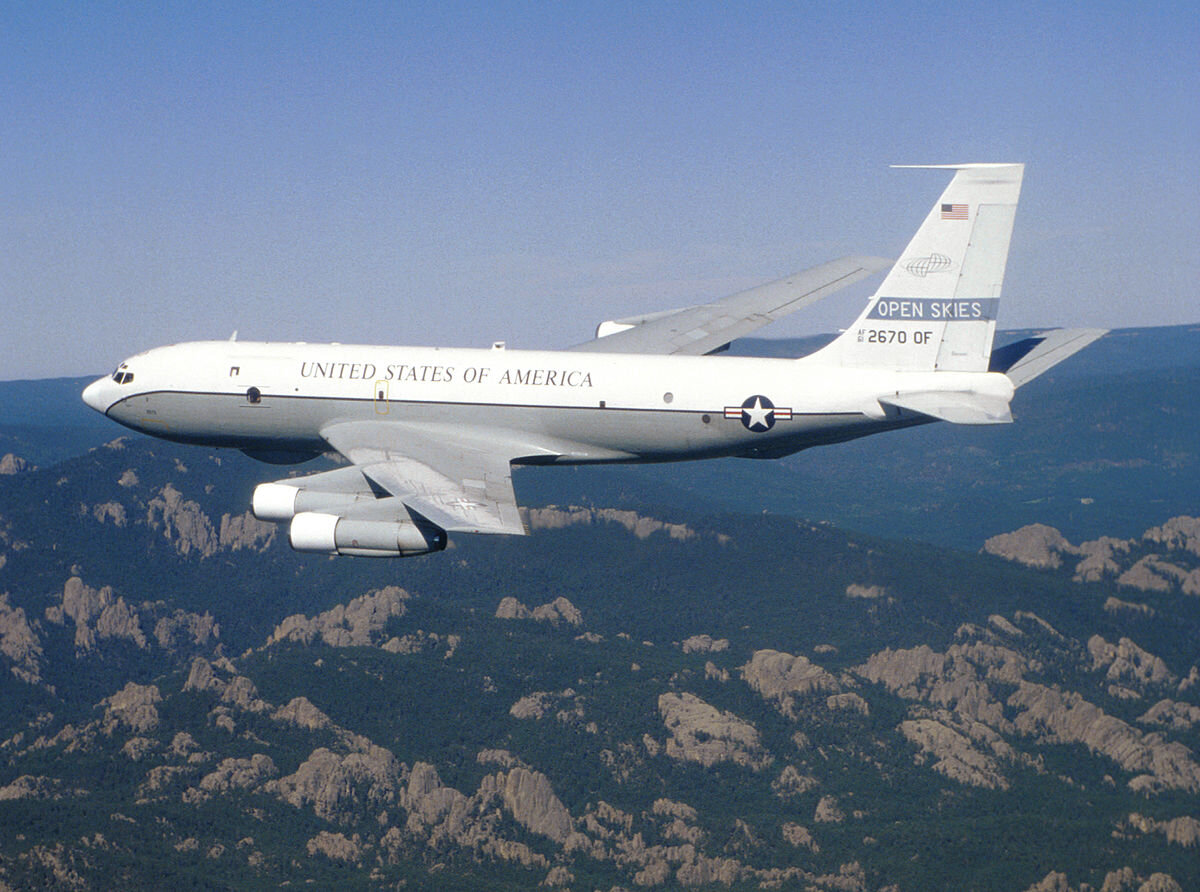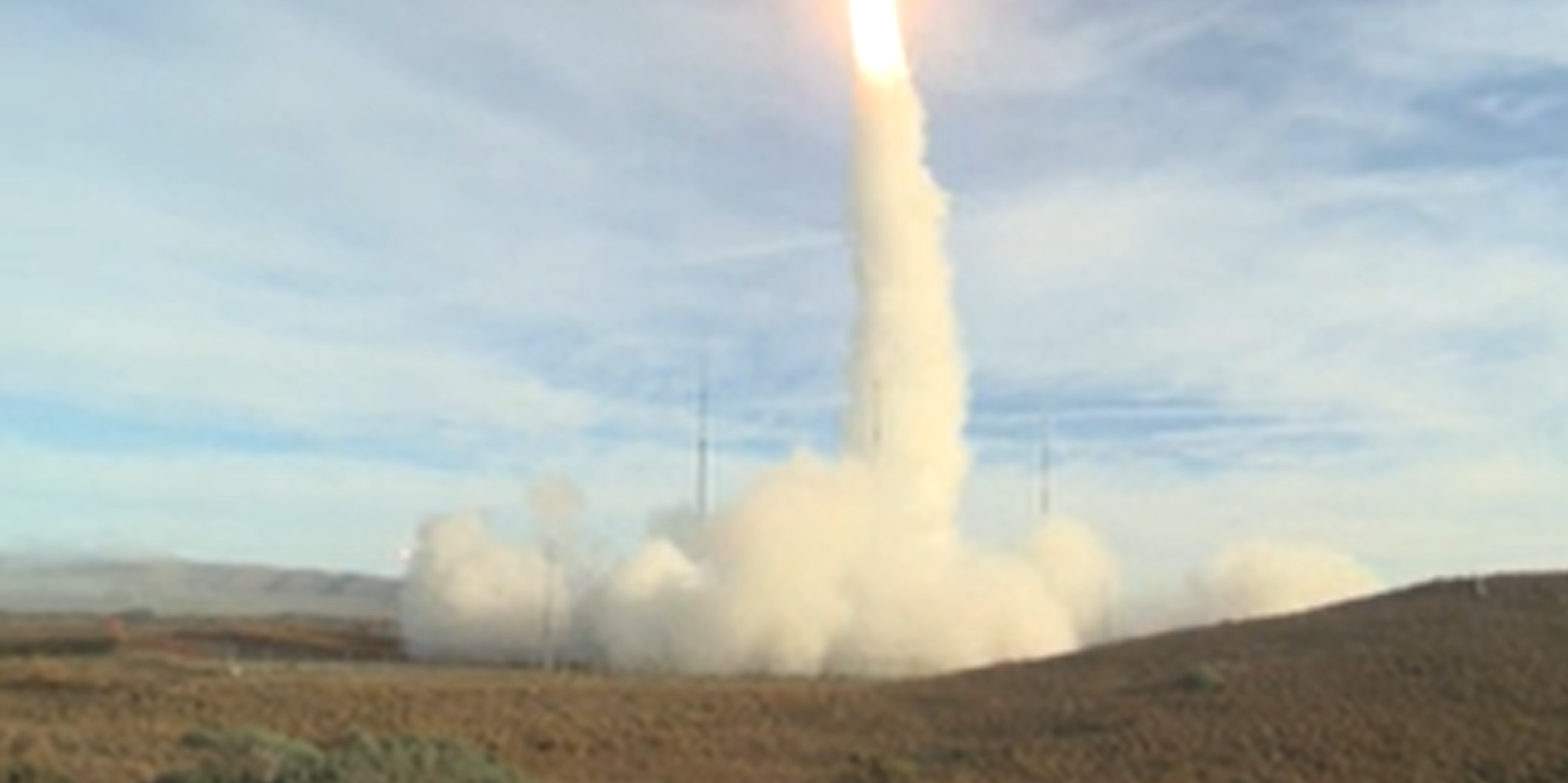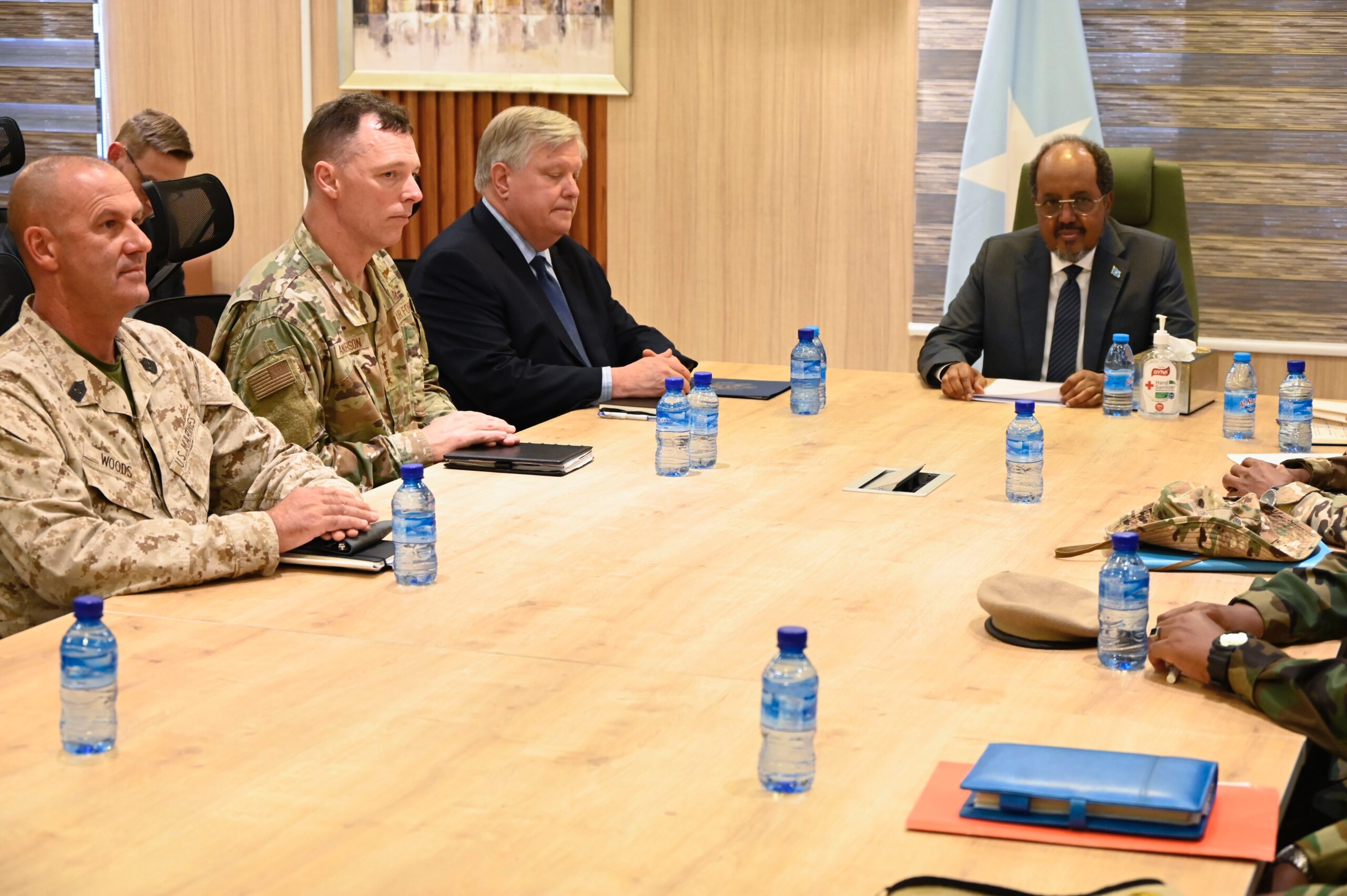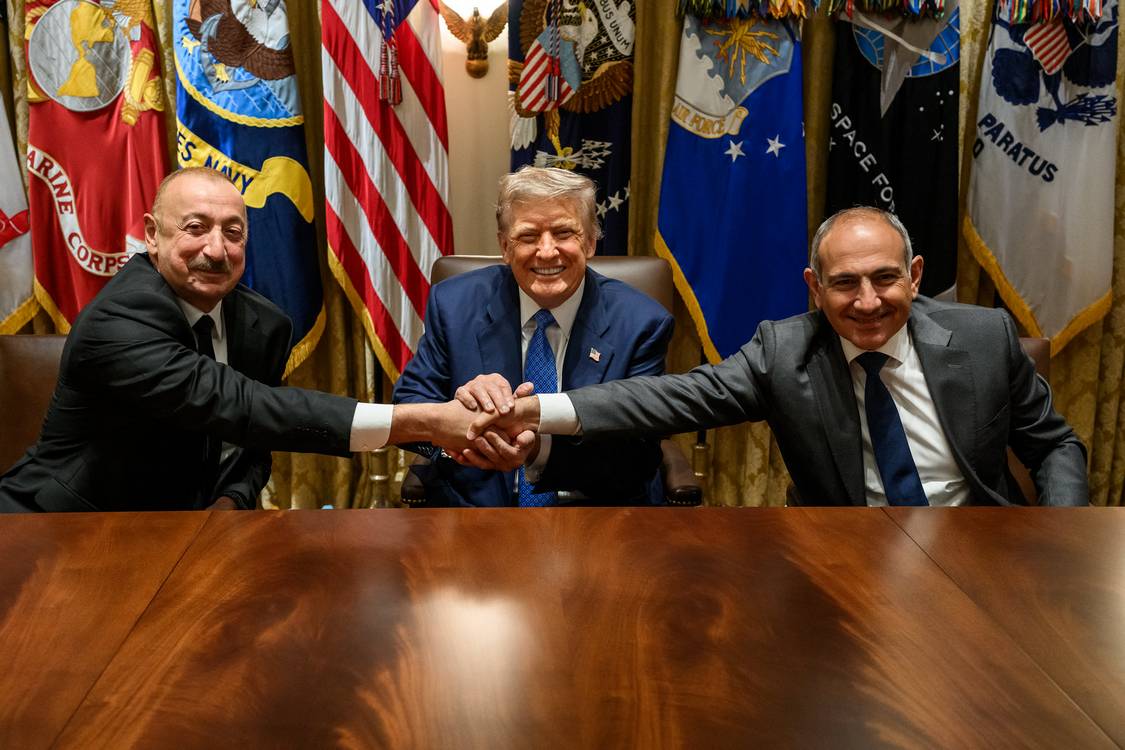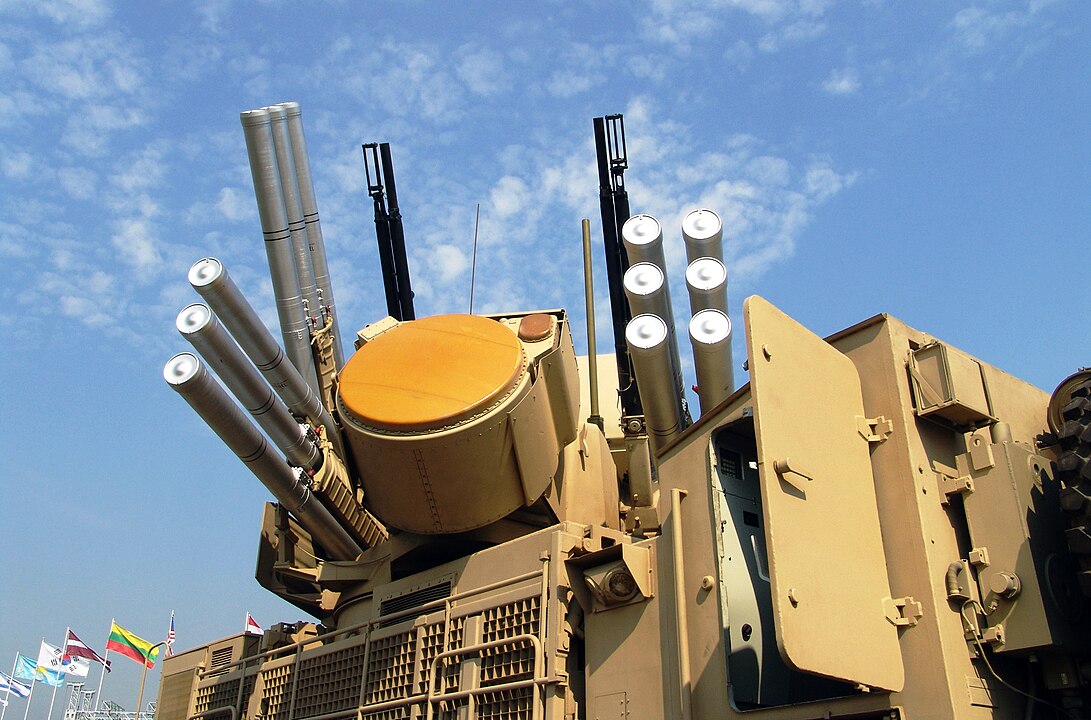PICTURED: Boeing OC-135B Open Skies reconnaissance aircraft, used by the U.S. for Open Skies Treaty Flights.
WASHINGTON, May 21st, 2020. Statements from the Trump administration indicate that 6 months from Friday it will be withdrawing from the Treaty on Open Skies, an agreement between 35 states including Russia and the U.S. that allows parties to fly observational missions over each other’s territory for military transparency.
“While the United States along with our Allies and partners that are States Parties to the Treaty have lived up to our commitments and obligations under the Treaty, Russia has flagrantly and continuously violated the Treaty in various ways for years,” read a statement from Sec. of State Mike Pompeo.
Pompeo then listed several purported violations including the construction of an Open Skies refueling station in Crimea, which the Secretary said is just an attempt to try and establish control over the annexed peninsula, a move the U.S. “does not and will never accept”. Also cited were denials of Open Skies Treaty flights over Russian military exercises in the Caucasus Mountains that could have involved up to 128,000 personnel and 20,000 pieces armor, and areas on the border with Georgia which Russia claims are independent states, but that Pompeo claims are areas of illegal encroachment into Georgian territory.
The Russian Foreign Ministry denied all accusations, saying Russia has never violated the treaty and that she will do everything in her power to try and salvage the agreement.
“If the US exits the Treaty, a blow will be dealt to a rather fragile balance of interests of its parties. As a result, not only the OST will suffer, but also the European security framework as a whole,” the ministry said in a statement according to RT.
PICTURED: Department of Defense Footage of the launch of their new ballistic missile with a range of between 500 and 2000 KM – a strike capability previously banned under the INF treaty which was allowed to expire under the Trump Administration last summer.
Another treaty falls
First proposed in 1955 by Eisenhower and then-Soviet Premier Nikolai Bulganin, the concept of “mutual aerial surveillance was reborn by President George H. W. Bush in 1989 to increase mutual understanding and confidence between the Warsaw Pact and NATO.
Signed in Helsinki in 1992 by James Baker, the U.S. Sec. of State under Bush Sr., the treaty entered into force in 2002 after the Russian Federation and Belarus finished ratification processes. The idea was that if all parties could see how many nuclear missiles their opponents had, or how many troops they had stationed close one’s borders, acts of aggression or defense based on a lack of information could be avoided, thus further removing humanity from touching down the nuclear football.
On December 12th, the United States test-fired an intermediate range ballistic missile that would have been in violation of another treaty the Trump Administration has exited known as the Intermediate-Range Nuclear Forces Treaty (INF).
President Trump allowed the treaty to expire last summer calling it a “relic” of Cold War history and “obsolete” in modern military strategy.
Negotiated by President Ronald Reagan and Mikhail Gorbachev in 1987, the INF was one the first steps towards denuclearizing the chessboard during the twilight of the Cold War.
A new Cold War heats up
While Defense Sec. Mark Esper ensured reporters at the time of the announced withdrawal plans that this would not mark the start of a new arms race with Russia, the testing of intermediate-range missiles so soon after exit and the subsequent withdrawal from Open Skies suggests otherwise.
“We remain committed to effective arms control that advances U.S., Ally, and partner security, that is verifiable and enforceable, and that includes partners that comply responsibly with their obligations,” Pompeo said in his address.
However since the announcement that INF would be allowed to expire, there have been no commitments made to “effective arms control,” and treaties continue to find themselves without a U.S. signatory.
“US and Russia are going to find themselves with few treaties designed to prevent military exchanges, and a lot of new opportunities for arms races. So far there is little sign anyone is going to do anything about it,” writes Jason Ditz, reporter and managing editor at Antiwar.com.
The New Strategic Arms Reduction Treaty (New START) is in force until 2021, with options to extend under mutual agreement until February of 2026, and is another nuclear weapons limiter between the U.S. and Russia. However the Trump Administration’s stance is that they aren’t afraid to let it run out as they are confident they “know how to win these races”.
“The president has made clear that we have a tried and true practice here. We know how to win these races and we know how to spend the adversary into oblivion,” U.S. Arms Control Czar Marshall Billingslea said in an interview on May 16th.
